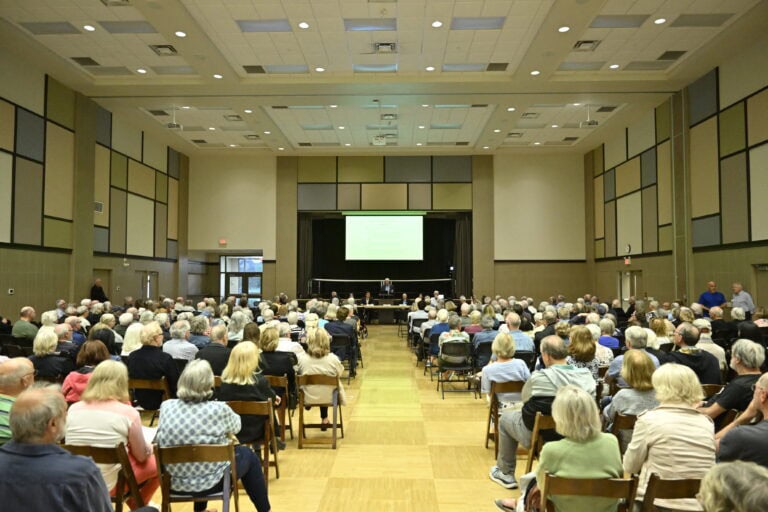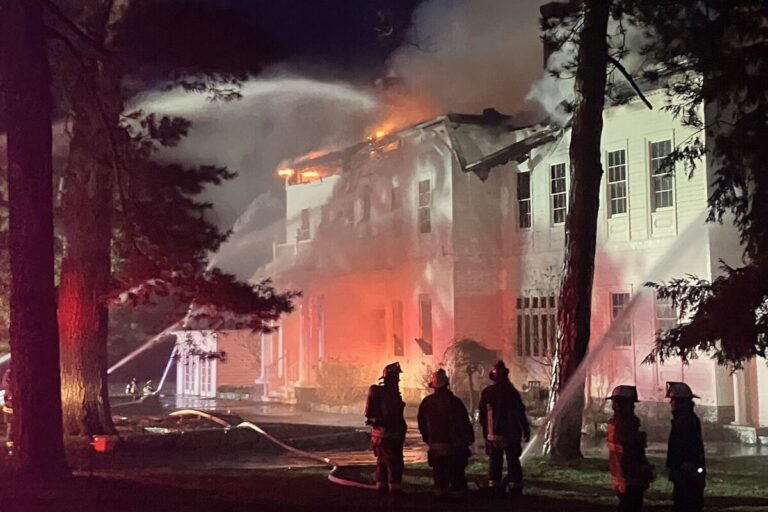Over the years, I’ve been fortunate to speak in various venues about heritage architecture.
During these talks, one of the things I’ve consistently noted is that most people wrestle somewhat with the Regency architectural style — perhaps because the different expressions of this school can, at first glance, appear unrelated.
So, I thought that this week, we might visit Regency through four of its expressions.
Beginning at the start, the Regency style grew out of the 18th-century Romantic philosophical movement, which rejected the prevailing British conservative social mores that promoted rationalism, order and harmony — the values that launched the Industrial Revolution.
Instead, Romantics celebrated individualism, variety, emotion and a profound connection with nature.
By 1800, the work of British poets, authors and artists of all stripes were expressing the tenets of the movement.
Indeed, even the Prince of Wales — a man who considered himself “the” authority on matters of style, culture and taste — was committed to Romantic expression.
Despite the fact both the king, and his ministers, considered the prince a ne’er do well as a result of his (let’s say) flamboyant lifestyle and spending, in 1811 when Parliament was forced, by the mental and physical afflictions George III suffered, to pass the Regency Act, it was the unpopular Prince of Wales (future George IV) who was appointed regent.
In short order, he commissioned fellow Romantic, the architect John Nash, to design grand projects embodying the principles of the movement.
This decision legitimized and popularized an architectural school that had been slowly evolving during the previous decade.
Now, given that two central tenets of this movement were individualism and variety, the evolving architecture could have splintered with each facet shooting off in completely different directions, however, that did not occur for several reasons.
First amongst which was the requirement that these new designs must have a profound connection with nature, adhering to the picturesque discipline of integrating the architecture within the surrounding landscape.
As a result, the architects’ designs appeared to be set closer to the ground while deliberately emphasizing the horizontal lines of the building through the introduction of verandahs, distinct watertables, belt courses and roof lines, which drew the eye out into the landscape.
Particular attention was paid to the play of light and shadow generated by the sun, existing natural features, new plantings and other elements of the building’s design which served to establish a marriage between the architecture and its setting.
Then, second, to be deemed successful within the Romantic playbook, the designs had to evoke a pleasurable natural emotive response — with the key word being “natural” — thus most decoration was subtle and understated.
These designs depended heavily on exacting execution of classic architectural principles (such as proportion and balance) to achieve that pleasing emotive response.
Regency architects drew some inspiration from neoclassical design, but this was leavened with elements from rural Italian (Tuscan), Moorish, Indian and Oriental architecture.
That said, these “exotic” elements were molded, altered and simplified through the filter of accepted and emerging British picturesque parameters.
And, this filter continued to be refined as the Regency style crossed the Atlantic and climatic considerations in Canada were encompassed.
At this point, let’s turn our attention to Upper Canada beginning in the years after the War of 1812.
The earliest Regency homes that appeared after 1814 were one or one-and-half-storey dwellings based on a design that had been inspired by returning military officers’ descriptions of the Indian bangla, which early British colonists had modified into modest gentlemen’s houses.
Built low to the ground on a square or, not infrequently — in a nod to the then prevalent five-bay Georgian form — a rectangular footprint.
The buildings had low hip roofs, symmetrical facades, tall chimneys and commonly sported verandahs which were often serviced by French doors.
Wildly popular in Upper Canada, these Regency cottages quickly became the most common housing form in the province during the first half of the 18th century.
In 1818, the new Parliament building of Upper Canada was constructed in the Regency style.
This expression offered the opportunity for a larger, more impressive manor home in this new architectural style for both those who needed additional space and the more affluent in society.
Two storeys tall and sheltered under a hip roof, the footprint was square and gave the building a cubic form.
Generally with three-bay ranked (first and second floor openings placed one directly above the other) facades that were rigidly symmetrical — the bays precisely set to divide the facade into four equal parts with the main entry located exactly at the centre point — these houses presented projecting watertables and belt courses to the street to emphasize the building’s horizontal lines.
Some sported verandahs while others had broad staircases leading to the main entry which commonly held side and transom lights in the clean, uncluttered surround.
Window openings were generally larger than those found in Georgians of the period and the chimneys invariably taller.
The next Regency variant eschewed the hip roof returning instead to a typical end-gabled rectangular, storey-and-a-half Georgian building form.
However, in every other aspect, it displayed Regency styling elements with wrap-around verandahs, stepped down from the roof eave to increase the horizontal lines, typically featured picturesque trelliage supports and was serviced by French doors in each opening.
The main entry and its classical clean surround with sidelights and transom light was always centred in the symmetrical facade.
As a gestalt, the presentation was a Romantic garden house and completely in-keeping with Regency design parameters.
For our last example, we arrive at the most picturesque of all the Regency expressions: the Tuscan villa.
Inspired by the rustic Italian farmhouses that were pictured in many of the Romantic paintings of the day, the first and prototypical Tuscan villa was John Nash’s own home, built in 1802.
These asymmetrical (the right side of the facade did not match the left side) L-shaped plan designs always featured a dramatic tower with the main entry at its base and were usually sited on relatively small, informally landscaped grounds.
Introduced into Upper Canada in the 1830s, they were a hit amongst the nouveau riche as a display of their newfound wealth.
As time went on, the more classic Tuscan (like ca. 1838 Bellevue in Kingston) with its clear statement of Romantic tenets was gradually transformed by the use of heavier, more ornate elements that would lead to the evolution of the towerless Italianate style.
The Romantic and Regency architecture left a profound mark on the landscape of Upper Canada during the 50 years between 1815 and 1865.
Indeed, it’s a mark that is easily found across Niagara and in Niagara-on-the-Lake.
Brian Marshall is a NOTL realtor, author and expert consultant on architectural design, restoration and heritage.














